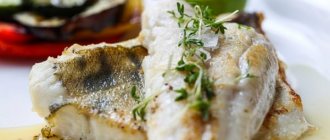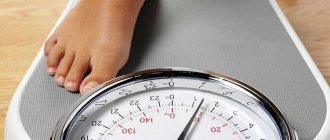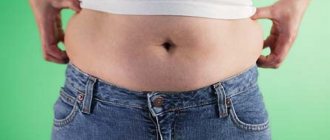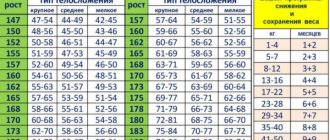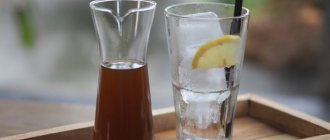People who want to lose weight first need to find out how many calories are in 1 kg of fat. If you have such knowledge, you can competently build a weight loss program, achieving greater efficiency. In addition, a person interested in his health needs to pay attention to the features of losing excess weight by following a diet and doing physical exercise.
Fat and the human body: why is it important to know how many calories are in a kilogram of fat?
Fat deposits in the body provide protection to human internal organs from mechanical stress and support the functioning of the body in the absence of sufficient amounts of food for a long time. They also help to recover from illness.
However, the amount of fat needs to be controlled. Otherwise, if the norm is exceeded, it will have a detrimental effect on vital processes:
- hormonal imbalance;
- With increased volumes of fat, internal organs work for wear and tear;
- load on joints, blood vessels;
- In addition, it is also worth noting the risks of serious diseases.
Therefore, it is so important to monitor the current indicators of body fat; in this regard, you should study how many calories are in 1 kg of human fat and how to properly get rid of excess volumes.
How many calories are in 1 kg of fat?
First of all, it is worth clarifying the composition of human fat:
- lipids in a volume from 54% to 85% of the total mass;
- water;
- proteins;
- enzymes.
As for how many calories are in 1 gram of fat in its pure form, it contains about 9 kilocalories. 1 kg of fat will contain approximately 7.7 kcal. However, deposits in their pure form are not found in the human body, so the number of calories will be lower. The exact value depends on the specific composition of fat, which is determined taking into account the characteristics of the individual organism. The average calorie intake is 6.5 kcal.
How many calories will you need to burn to lose a pound of fat?
Having decided how many calories are in a person’s fat, and having identified its excess in your body, you should proceed to the procedure for achieving the norm. Having knowledge about the natural processes of the body will allow you to lose weight with greater productivity.
To lose weight, you need to be in a calorie deficit. You will need to make sure that the volume burned is less than what a person receives from the daily diet. If you want to lose a pound of fat, you will need to achieve a deficit of 7 thousand calories. Therefore, to lose weight to a given value in a week, you need to create a deficit of 1 thousand calories per day.
For example, if your daily menu consists of 2.9 kcal, you need to remove foods from your diet to achieve 1.9 kcal.
Why the “3500 kcal rule” is not accurate in practice
I'm pretty sure everyone knows the old rule: 3500 kcal is half a kilo of weight. This idea of energy balance leads to overly straightforward, “mathematical” calculations of weight loss. It is estimated that simply reducing energy intake by 500 kcal per day - or increasing energy consumption by 500 kcal - should lead to weight loss of half a kilo per week.
But this approach works for almost no one. Or almost never. There are several reasons for this, not the least of which is poor dieting, which leads to less (than expected) weight loss [13]. But even if a person who wants to lose weight strictly adheres to the diet, real changes will differ from the calculated figures.
And for this reason, many people mistakenly believe that the concept of energy balance itself is incorrect, or does not apply to people, etc. But the only mistake is the interpretation of the rule itself , the way it is presented, and why it almost never works as expected. Because, in general, creating a deficit (or excess) of 3500 kcal does not lead to a loss (gain) of 0.5 kg of weight per week [14].
There are several reasons for this misunderstanding.
First, the energy balance equation says nothing about changes in weight; it says that the long-term difference between intake and expenditure determines how much energy is stored or removed from the body. And the first problem we face is that different types of tissue (e.g. organs, brain, muscle, fat, carbohydrates, water) contain different amounts of energy:
In essence, the 3,500 kcal rule only applies to burning fat, not other components of the body. And, by the way, fat is not 100% triglycerides, but only 85-90%. Let's take 87% for good measure. The rest is water and other cellular components.
So in one pound of fat (454 grams) there would be approximately 394 grams of triglycerides, which provide 9 kcal per gram, so the total would be 3,555 kcal. This is where the 3500 kcal rule comes from. But again, I want to remind you that this is not just about fat.
How are fat cells broken down?
Regardless of how many kilocalories there are in 1 kg of human fat, you need to take into account the features of fat breakdown. The procedure is implemented in the following order:
- To initiate the process, it is initially necessary to reduce the level of fatty acids in the blood through diet, supplemented by sports exercises to increase the concentration of breakdown products. The latter are responsible for energy volumes and require fatty acids to replenish them.
- After entering the blood, fatty acids mix with proteins and albumins. The volume of these components determines blood viscosity and albumin values. This is another indicator that is important to track when losing weight quickly.
- Acids are used to replenish energy resources that are spent through active physical exercise, which helps reduce the amount of fat in the body.
Important: if weight loss is carried out too quickly, the resulting activity can cause severe wear and tear on the cardiovascular system and kidneys. Therefore, it is important to lose weight gradually.
It is also necessary to take into account that getting rid of extra pounds only through diet, without exercise, can cause complications. Thus, in the absence of active exercise, weight loss can lead to an increase in the volume of fatty acids in the body, which contributes to the formation of cholesterol in the blood vessels. If muscle tissue does not burn fat, it can also affect the liver, overloading it. This can lead to cirrhosis.
Therefore, understanding how many calories are in a gram of fat is not enough to get a complete answer to questions related to effective weight loss.
Why does weight come off faster on Dukan? Because more muscle is lost
Let's look at this example. Let's say a person who is in an energy imbalance - in a deficit - spends 10% of energy from dry mass and the remaining 90% from fat reserves. It creates a deficit of 3500 kcal per week.
10% of the weight (350 kcal) comes from lean mass/muscle protein, which is only 600 kcal per pound. That's less than 230 grams of weight lost. The remaining 3,150 calories will come from fat (about 0.9 pounds of fat). So, in general, in a week you will lose 634 g of weight (230 g of dry mass and 404 g of fat).
This means that weight will be lost faster if more lean mass is burned , and I suspect that all sorts of centers and commercial weight loss programs recommend refraining from strength training for this very reason (this is the key to the ban on strength training on the Dukan diet!)
Exercising forces the body to conserve muscle while dieting (which is good), but weight loss is faster if more lean mass is lost. Imagine an absurd situation when all the weight is lost from the muscles, energy is consumed 100% from dry mass. Considering its low calorie content - about 700 kcal per pound, with the same deficit of 3500 kcal per week, you can lose as much as 2.5 kg of weight (due to muscles). But the composition (body composition) in terms of % fat will only worsen. Keep in mind, this isn't actually possible, I'm just taking such an extreme example to explain.
Please note: the owner of the butt on the left is simply starving to lose weight, losing muscle, and the proud owner of the butt on the right is doing squats... She also does massage, photoshop, and possibly silicone.
But in order to burn half a kilo of fat in this situation, you will need to make a deficit of 10% greater than 3500 kcal, since 10% of the energy is consumed in the breakdown of protein. So, to lose half a kilo of fat, you need a deficit of 3850 kcal, considering that 90% of energy comes from fat.
In fact, the 3500 kcal rule “doesn’t work” only because of a misunderstanding of the rule itself. It applies to fat burning if 100% of fat is burned. In the early stages of a diet, when water and glycogen are lost, more weight may be lost. And then, if the energy is not taken 100% from fat, then the rates will, at a minimum, differ from the calculated ones [15].
How to lose weight correctly?
To get rid of a kilogram of fat under the skin and around organs without losing muscle mass, you need to consider the consequences of the actions you perform. After all, physical activity and diet not only allow you to get rid of fat deposits, but can also act as a reason for the loss of necessary muscle mass.
To do this, you need to follow a number of recommendations:
- Having decided how many calories are in 1 kg of fat, you also need to calculate the amount of protein in the diet. The productivity of weight loss largely depends on it. According to general rules, this value varies from 10% to 35%. With large amounts of protein, the risk of losing muscle mass decreases and the likelihood of gaining it through physical activity increases. Therefore, during the diet you need to add protein foods to the menu.
- maintaining a sleep schedule. It is important for both a healthy person and an overweight body. It is important to sleep at least 8 hours, and it is better to go to sleep before midnight. Chronic lack of sleep can cause bad mood, overeating, laziness, and slower hormone production;
- physical activity. There is no need to spend hours of free time working out in the gym. It is enough to approach the formation of exercises correctly, which will allow you to avoid unnecessary time expenditure and achieve the desired effect. Special attention should be paid to cardio training, adding strength training to your usual physical activity. If you are unable to perform such exercises, you can use yoga or Pilates - with their help you can also engage and develop the necessary muscle groups;
- ensure compliance with nutritionist requirements. For several days after the transition to the process of losing weight, the human body strives to adapt to a smaller mass, so metabolic processes slow down, which reduces the effectiveness of the actions performed. In this regard, you need to change the exercise plan every two weeks.
Knowing how many calories are in a kilogram of human fat will not allow you to lose excess weight. In addition, a person needs to study the recommendations of doctors and ensure compliance with them.
What workouts might be suitable?
When burning calories through physical activity, you need to take into account a number of factors that influence the effectiveness of your actions:
- age;
- current height and weight;
- presence or absence of health problems;
- habitual physical activity;
- diet
Exercises and their duration must be selected taking into account the above positions. As for activities that allow you to get rid of excess weight, you can highlight:
- jogging in the mornings or evenings – at least 20 minutes;
- jumping rope – from 10 minutes;
- swimming - from 15 minutes crawl;
- fitness – 30-40 minutes of moderate intensity exercise.
You need to try to make more movements at home. If you cannot move at the prescribed pace throughout the day, you should spend more time walking in the fresh air.
Any activity is useful for people who have learned how many calories are in 1 gram of fat and want to achieve standard values for this indicator.
How to stick to a diet correctly?
In the future, after becoming familiar with how many calories are in one kilogram of fat and how to lose excess weight, you will need to clarify the specifics of losing weight with food. Without changing the menu, you will not be able to achieve the result. The construction of the diet should be carried out in accordance with the recommendations of nutritionists:
- It is necessary to eat food without haste, because it also takes a lot of energy to digest the incoming food by the stomach. It is important to chew each piece thoroughly without rushing. It is better not to be distracted by various irritants such as a smartphone, laptop or television;
- compliance with the drinking regime. This especially applies to summer time. You need to take chilled liquid more often. Depending on the specific diet rules, frozen juice or frozen berry sorbet may be consumed;
- When creating a breakfast, you need to take into account that the morning meal should consist of complex carbohydrates and fiber. To digest dishes with such content, the body needs more time, which will have to burn more calories;
- there is no need for a critical reduction in diet. Yes, this way you can lose weight in a short time, but this approach will not provide long-term results. At the same time, there is a high risk of negative consequences for the human body. Therefore, you need to give preference to small adjustments to your menu and habits - both at home and at work.
Metabolic speed and daily routine are individual for each person, so nutritionists recommend first reducing your daily diet by 300 kilocalories. You should also, before initiating the weight loss process, consult a doctor who will help explain how many kcal are in 1 kg of human fat and what rules must be followed to achieve the desired result.
IMPORTANT! Informational article! Before use, you should consult a specialist.
Table of BJU in food products
After determining the caloric content of the diet, you should make a list of dishes that will meet your goals. Calculating BJU in food is another effective assistant in the fight against excess weight. The calculator will help you organize a balanced diet, taking into account your personal nutritional value of foods.
When determining the calorie content of a particular dish, you should be guided only by individual indicators. The norm of BZHU per day is different for women and men. Therefore, there is no universal diet for the whole family. For example, for a woman 35 years old, weighing 70 kg and height 160 cm, leading a sedentary lifestyle, the energy value of food should be in the range of 1365 - 1536 kcal. At the same time, the BJU for weight loss for a man aged 37 years, weighing 80 kg and height 180 cm, will be 1959 - 2204 kcal, with a daily intake of proteins 146 grams, fats 77 grams, carbohydrates 209 grams. Thus, the female body requires less energy. Therefore, you can periodically resort to mono-diets (for example, buckwheat). A man must include meat, fish, dairy products, vegetable and animal fats in his diet. Otherwise, poor health and sleep disturbances become a constant companion to the complex process of losing weight.
A table of proteins, fats and carbohydrates in food will help you create a tasty and healthy menu for every adult family member. Choose your favorite dishes that fit best into your weight loss program and stay in shape without painful starvation.
| Milk and dairy products | Squirrels | Fats | Carbohydrates | Kcal |
| Brynza (cow's milk cheese) | 17,9 | 20,1 | 0,0 | 260 |
| Natural yogurt. 2% fat. | 4,3 | 2 | 6,2 | 60 |
| Kefir 3.2% fat | 2,8 | 3,2 | 4,1 | 56 |
| Kefir 1% low-fat | 2,8 | 1 | 4 | 40 |
| Milk 3.2% | 2,9 | 3,2 | 4,7 | 59 |
| Milk 2.5% | 2,8 | 2,5 | 4,7 | 52 |
| Condensed milk without sugar | 6,6 | 7,5 | 9,4 | 131 |
| Condensed milk with sugar | 7,2 | 8,5 | 56 | 320 |
| Whole milk powder | 26 | 25 | 37,5 | 476 |
| Yogurt 2.5% | 2,9 | 2,5 | 4,1 | 53 |
| Ryazhenka 2.5% | 2,9 | 2,5 | 4,2 | 54 |
| Cream 10% (low-fat) | 3 | 10 | 4 | 118 |
| Cream 20% (medium fat content) | 2,8 | 20 | 3,7 | 205 |
| Sour cream 10% (low-fat) | 3 | 10 | 2,9 | 115 |
| Sour cream 20% (medium fat content) | 2,8 | 20 | 3,2 | 206 |
| Dutch cheese | 26 | 26,8 | 0,0 | 352 |
| Processed cheese | 16,8 | 11,2 | 23,8 | 257 |
| Poshekhonsky cheese | 26 | 26,5 | 0,0 | 350 |
| Russian cheese | 24,1 | 29,5 | 0,3 | 363 |
| Swiss cheese | 24,9 | 31,8 | 0,0 | 396 |
| Curd | 7,1 | 23 | 27,5 | 341 |
| Low-fat cottage cheese | 16,5 | 0,0 | 1,3 | 71 |
| Cottage cheese 5% low-fat | 17,2 | 5 | 1,8 | 121 |
| Cottage cheese 9% semi-fat | 16,7 | 9 | 2 | 159 |
| Bread and bakery products | Squirrels | Fats | Carbohydrates | Kcal |
| Baranki | 16 | 1 | 0,0 | 366 |
| 1st grade wheat flour | 10,6 | 1,3 | 67,6 | 331 |
| Wheat flour 2nd grade | 11,7 | 1,8 | 63,7 | 324 |
| Wheat flour variety | 10,3 | 1,1 | 68,9 | 334 |
| Seeded rye flour | 6,9 | 1,4 | 67,3 | 304 |
| Rusks for tea | 10 | 2,3 | 73,8 | 397 |
| Drying poppy seeds | 11,3 | 4,4 | 70,5 | 372 |
| Wheat bread | 8,1 | 1 | 48,8 | 242 |
| Rye bread | 13 | 3 | 40 | 250 |
| Sliced loaf | 7,5 | 2,9 | 50,9 | 264 |
| Loaf of Moscow Region | 7,5 | 2,6 | 50,6 | 261 |
| Fats, butter and margarine | Squirrels | Fats | Carbohydrates | Kcal |
| Confectionery fat | 0,0 | 99,8 | 0,0 | 897 |
| Mayonnaise Provencal | 3,1 | 67 | 2,6 | 624 |
| Table margarine 40% | 0,0 | 40 | 0,0 | 360 |
| Milk margarine | 0,3 | 82 | 1 | 743 |
| Vegetable oil | 0,0 | 99 | 0,0 | 899 |
| Butter 72.5% | 1 | 72,5 | 1,4 | 662 |
| Butter 82% | 0,7 | 82 | 0,7 | 740 |
| Palm oil | 0,0 | 99,9 | 0,0 | 899 |
| Cereals | Squirrels | Fats | Carbohydrates | Kcal |
| Hercules | 12,5 | 6,2 | 61 | 352 |
| Buckwheat (done) | 9,5 | 2,3 | 65,9 | 306 |
| Buckwheat kernels (buckwheat) | 12,6 | 3,3 | 62,1 | 313 |
| Corn grits | 8,3 | 1,2 | 75 | 337 |
| Semolina | 10,3 | 1 | 67,4 | 328 |
| Oat groats | 12,3 | 6,1 | 59,5 | 342 |
| Pearl barley | 9,3 | 1,1 | 73,7 | 320 |
| Wheat groats | 11,5 | 1,3 | 62 | 316 |
| Millet cereal | 11,5 | 3,3 | 69,3 | 348 |
| White rice | 6,7 | 0,7 | 78,9 | 344 |
| Oatmeal | 12,5 | 6 | 64,9 | 363 |
| Barley | 10,4 | 1,3 | 66,3 | 324 |
| Vegetables | Squirrels | Fats | Carbohydrates | Kcal |
| Eggplant | 1,2 | 0,1 | 4,5 | 24 |
| Swede | 1,2 | 0,1 | 7,7 | 37 |
| Green peas | 5 | 0,2 | 13,8 | 73 |
| Green bean | 4 | 0,0 | 4,3 | 32 |
| Zucchini | 0,6 | 0,3 | 4,6 | 24 |
| White cabbage | 1,8 | 0,1 | 4,7 | 27 |
| Red cabbage | 1,8 | 0,0 | 7,6 | 24 |
| Cauliflower | 2,5 | 0,3 | 5,4 | 30 |
| Potato | 2 | 0,4 | 16,1 | 76 |
| Green onion (feather) | 1,3 | 0,0 | 4,6 | 19 |
| Leek | 2 | 0,0 | 8,2 | 33 |
| Bulb onions | 1,4 | 0,0 | 10,4 | 47 |
| Carrot | 1,3 | 0,1 | 6,9 | 32 |
| Ground cucumbers | 0,8 | 0,1 | 2,8 | 15 |
| Greenhouse cucumbers | 0,7 | 0,0 | 1,8 | 10 |
| Sweet yellow pepper | 1,3 | 0,0 | 5,3 | 27 |
| Sweet green pepper | 1,3 | 0,0 | 6,9 | 33 |
| Sweet red pepper | 1,3 | 0,0 | 5,3 | 27 |
| Parsley (greens) | 3,7 | 0,0 | 8,1 | 45 |
| Parsley (root) | 1,5 | 0,0 | 11 | 47 |
| Rhubarb (petiole) | 0,7 | 0,0 | 2,9 | 16 |
| Radish | 1,2 | 0,1 | 3,4 | 19 |
| Radish | 1,9 | 0,0 | 7 | 34 |
| Salad | 1,5 | 0,0 | 2,2 | 14 |
| Beet | 1,5 | 0,1 | 8,8 | 43 |
| Tomatoes | 1,1 | 0,2 | 3,7 | 20 |
| Cheremsha | 2,4 | 0,1 | 6,5 | 34 |
| Garlic | 6,5 | 0,5 | 29,9 | 143 |
| Spinach | 2,9 | 0,3 | 2 | 22 |
| Sorrel | 1,5 | 0,0 | 2,9 | 19 |
| Fruits | Squirrels | Fats | Carbohydrates | Kcal |
| Apricots | 0,9 | 0,0 | 9 | 44 |
| Quince | 0,6 | 0,0 | 9,8 | 40 |
| Cherry plum | 0,2 | 0,0 | 6,9 | 27 |
| A pineapple | 0,4 | 0,0 | 10,6 | 49 |
| Bananas | 1,5 | 0,0 | 21,8 | 95 |
| Cherry | 0,8 | 0,0 | 11,3 | 49 |
| Pomegranate | 0,9 | 0,0 | 11,8 | 52 |
| Pear | 0,4 | 0,0 | 10,7 | 42 |
| Figs | 0,7 | 0,0 | 13,9 | 56 |
| Peaches | 0,9 | 0,0 | 10,4 | 44 |
| Garden plum | 0,8 | 0,0 | 9,9 | 43 |
| Dates | 2,5 | 0,0 | 72,1 | 281 |
| Persimmon | 0,5 | 0,0 | 15,9 | 62 |
| Cherries | 1,1 | 0,0 | 12,3 | 52 |
| Apples | 0,4 | 0,0 | 11,3 | 46 |
| Orange | 0,9 | 0,0 | 8,4 | 38 |
| Grapefruit | 0,9 | 0,0 | 7,3 | 35 |
| Lemon | 0,9 | 0,0 | 3,6 | 31 |
| Mandarin | 0,8 | 0,0 | 8,6 | 38 |
| Grape | 0,4 | 0,0 | 17,5 | 69 |
| Blackberry | 2 | 0,0 | 5,3 | 33 |
| Strawberries | 1,8 | 0,0 | 8,1 | 41 |
| Cranberry | 0,5 | 0,0 | 4,8 | 28 |
| Gooseberry | 0,7 | 0,0 | 9,9 | 44 |
| Raspberries | 0,8 | 0,0 | 9 | 41 |
| White currant | 0,3 | 0,0 | 8,7 | 39 |
| Black currant | 1,0 | 0,0 | 8,0 | 40 |
| Blueberry | 1,1 | 0,0 | 8,6 | 40 |
| Fresh rosehip | 1,6 | 0,0 | 24 | 101 |
| Dried rose hips | 4,0 | 0,0 | 60 | 253 |
| Dried fruits | Squirrels | Fats | Carbohydrates | Kcal |
| Dried apricots | 5 | 0,0 | 67,5 | 278 |
| Dried apricots | 5,2 | 0,0 | 65,9 | 272 |
| Raisins with pit | 1,8 | 0,0 | 70,9 | 276 |
| Raisins sultanas | 2,3 | 0,0 | 71,2 | 279 |
| Cherry | 1,5 | 0,0 | 73 | 292 |
| Pear | 2,3 | 0,0 | 62,1 | 246 |
| Peaches | 3,0 | 0,0 | 68,5 | 275 |
| Prunes | 2,3 | 0,0 | 65,6 | 264 |
| Apples | 3,2 | 0,0 | 68 | 273 |
| Legumes | Squirrels | Fats | Carbohydrates | Kcal |
| Beans | 6 | 0,1 | 8,3 | 58 |
| Peas | 23 | 1,6 | 57,7 | 323 |
| Whole peas | 23 | 1,2 | 53,3 | 303 |
| Soybeans | 34,9 | 17,3 | 26,5 | 395 |
| Beans | 22,3 | 1,7 | 54,5 | 309 |
| Lentils | 24,8 | 1,1 | 53,7 | 310 |
| Mushrooms | Squirrels | Fats | Carbohydrates | Kcal |
| White fresh | 3,2 | 0,7 | 1,6 | 25 |
| White dried | 27,6 | 6,8 | 10 | 209 |
| Fresh boletus | 2,3 | 0,9 | 3,7 | 31 |
| Fresh boletuses | 3,3 | 0,5 | 3,4 | 31 |
| Meat, poultry and offal | Squirrels | Fats | Carbohydrates | Kcal |
| Mutton | 16,3 | 15,3 | 0,0 | 203 |
| Beef | 18,9 | 12,4 | 0,0 | 187 |
| horsemeat | 20,2 | 7 | 0,0 | 143 |
| Rabbit | 20,7 | 12,9 | 0,0 | 199 |
| Pork lean | 16,4 | 27,8 | 0,0 | 316 |
| Pork is fatty | 11,4 | 49,3 | 0,0 | 489 |
| Veal | 19,7 | 1,2 | 0,0 | 90 |
| Beef liver | 17,4 | 3,1 | 0,0 | 98 |
| Beef Kidneys | 12,5 | 1,8 | 0,0 | 66 |
| Beef Udder | 12,3 | 13,7 | 0,0 | 173 |
| Beef Heart | 15 | 3 | 0,0 | 87 |
| Beef Tongue | 13,6 | 12,1 | 0,0 | 163 |
| Pork kidneys | 13 | 3,1 | 0,0 | 80 |
| Pork liver | 18,8 | 3,6 | 0,0 | 108 |
| Pork heart | 15,1 | 3,2 | 0,0 | 89 |
| Pork tongue | 14,2 | 16,8 | 0,0 | 208 |
| Geese | 16,1 | 33,3 | 0,0 | 364 |
| Turkey | 21,6 | 12 | 0,8 | 197 |
| Chickens | 20,8 | 8,8 | 0,6 | 165 |
| Chickens | 18,7 | 7,8 | 0,4 | 156 |
| Ducks | 16,5 | 61,2 | 0,0 | 346 |
| Sausage | Squirrels | Fats | Carbohydrates | Kcal |
| Boiled sausage Diabetic | 12,1 | 22,8 | 0,0 | 254 |
| Boiled sausage Dietary | 12,1 | 13,5 | 0,0 | 170 |
| Boiled sausage Doctorskaya | 13,7 | 22,8 | 0,0 | 260 |
| Boiled sausage Lyubitelskaya | 12,2 | 28 | 0,0 | 301 |
| Boiled sausage Milk | 11,7 | 22,8 | 0,0 | 252 |
| Boiled sausage Separate | 10,1 | 20,1 | 1,8 | 228 |
| Boiled veal sausage | 12,5 | 29,6 | 0,0 | 316 |
| Pork sausages | 10,1 | 31,6 | 1,9 | 332 |
| Dairy sausages | 12,3 | 25,3 | 0,0 | 277 |
| Russian sausages | 12 | 19,1 | 0,0 | 220 |
| Pork sausages | 11,8 | 30,8 | 0,0 | 324 |
| Boiled-smoked Amateur | 17,3 | 39 | 0,0 | 420 |
| Boiled-smoked Cervelat | 28,2 | 27,5 | 0,0 | 360 |
| Semi-smoked Krakow | 16,2 | 44,6 | 0,0 | 466 |
| Semi-smoked Minsk | 23 | 17,4 | 2,7 | 259 |
| Semi-smoked Poltavskaya | 16,4 | 39 | 0,0 | 417 |
| Semi-smoked Ukrainian | 16,5 | 34,4 | 0,0 | 376 |
| Raw smoked Amateur | 20,9 | 47,8 | 0,0 | 514 |
| Raw smoked Moscow | 24,8 | 41,5 | 0,0 | 473 |
| Canned meat and smoked meats | Squirrels | Fats | Carbohydrates | Kcal |
| Beef stew | 16,8 | 18,3 | 0,0 | 232 |
| Pork stew | 14,9 | 32,2 | 0,0 | 349 |
| Raw smoked brisket | 7,6 | 66,8 | 0,0 | 632 |
| Raw smoked loin | 10,5 | 47,2 | 0,0 | 467 |
| Ham | 22,6 | 20,9 | 0,0 | 279 |
| Eggs | Squirrels | Fats | Carbohydrates | Kcal |
| Chicken egg | 12,7 | 10,9 | 0,7 | 157 |
| Egg powder | 45 | 37,3 | 7,1 | 542 |
| Protein powder | 73,3 | 1,8 | 7 | 336 |
| Dry yolk | 34,2 | 52,2 | 4,4 | 623 |
| Quail egg | 11,9 | 13,1 | 0,6 | 168 |
| Fresh fish and seafood | Squirrels | Fats | Carbohydrates | Kcal |
| Pink salmon | 20,5 | 6,5 | 0,0 | 142 |
| Flounder | 16,5 | 1,8 | 0,0 | 83 |
| crucian carp | 17,7 | 1,8 | 0,0 | 112 |
| Carp | 16 | 5.6 | 0,0 | 96 |
| Chum salmon | 22 | 5.6 | 0,0 | 138 |
| Smelt | 15.4 | 4.5 | 0,0 | 102 |
| Bream | 17.1 | 4.1 | 0,0 | 105 |
| Salmon | 20.8 | 15.1 | 0,0 | 219 |
| Macrurus | 13.2 | 0.8 | 0,0 | 60 |
| Pollock | 15.9 | 0.7 | 0,0 | 70 |
| capelin | 13.4 | 11.5 | 0,0 | 157 |
| Navaga | 16.1 | 1 | 0,0 | 73 |
| Burbot | 18.8 | 0.6 | 0,0 | 81 |
| Sea bass | 17.6 | 5.2 | 0,0 | 117 |
| River perch | 18.5 | 0.9 | 0,0 | 82 |
| Sturgeon | 16.4 | 10.9 | 0,0 | 164 |
| Halibut | 18.9 | 3 | 0,0 | 103 |
| Blue whiting | 16.1 | 0.9 | 0,0 | 72 |
| Carp | 18.4 | 5.3 | 0,0 | 121 |
| Large saury | 18.6 | 20.8 | 0,0 | 262 |
| Small saury | 20.4 | 0.8 | 0,0 | 143 |
| Salaka | 17.3 | 5.6 | 0,0 | 121 |
| Herring | 17.7 | 19.5 | 0,0 | 242 |
| Whitefish | 19 | 7.5 | 0,0 | 144 |
| Mackerel | 18 | 9 | 0,0 | 153 |
| Som | 16.8 | 8.5 | 0,0 | 144 |
| Horse mackerel | 18.5 | 5 | 0,0 | 119 |
| Sterlet | 17 | 6.1 | 0,0 | 320 |
| Zander | 19 | 0.8 | 0,0 | 83 |
| Cod | 17.5 | 0.6 | 0,0 | 75 |
| Tuna | 22,7 | 0,7 | 0,0 | 96 |
| coal fish | 13.2 | 11.6 | 0,0 | 158 |
| Sea eel | 19.1 | 1.9 | 0,0 | 94 |
| Acne | 14.5 | 30.5 | 0,0 | 333 |
| Hake | 16.6 | 2.2 | 0,0 | 86 |
| Pike | 18.4 | 0.8 | 0,0 | 82 |
| Ide | 18.2 | 1,0 | 0,0 | 81 |
| Cod liver | 4,2 | 65,7 | 0,0 | 613 |
| Squid | 18 | 0,3 | 0,0 | 75 |
| Crab | 16 | 0,5 | 0,0 | 69 |
| Shrimp | 18 | 0,8 | 0,0 | 83 |
| Sea kale | 0,8 | 0,2 | 3 | 5 |
| Nuts | Squirrels | Fats | Carbohydrates | Kcal |
| Hazelnut | 16,1 | 66,9 | 9,9 | 704 |
| Almond | 18,6 | 57,7 | 13,6 | 645 |
| Walnut | 15,2 | 61,3 | 10,2 | 648 |
| Peanut | 26,3 | 45,2 | 9,7 | 548 |
| sunflower seed | 20,7 | 52,9 | 5 | 578 |
| Sweets | Squirrels | Fats | Carbohydrates | Kcal |
| Honey | 0,8 | 0,0 | 80,3 | 308 |
| Marshmallow | 0,8 | 0,0 | 78,3 | 299 |
| Marmalade | 4,3 | 0,1 | 77,7 | 296 |
| Caramel | 0,0 | 0,1 | 77,7 | 296 |
| Chocolate candies | 4,3 | 39,5 | 54,2 | 596 |
| Paste | 0,5 | 0,0 | 80,4 | 305 |
| Granulated sugar | 0,0 | 0,0 | 99,5 | 374 |
| Sunflower halva | 11,6 | 29,7 | 54 | 516 |
| Dark chocolate | 6,9 | 35,3 | 52,6 | 540 |
| Milk chocolate | 6,9 | 35,7 | 52,4 | 547 |
| Waffles with French fillings | 3,2 | 2,8 | 80,9 | 350 |
| Waffles with fat fillings | 3,4 | 30,2 | 64,7 | 539 |
| Tube cake with cream | 1,7 | 25,2 | 50,9 | 454 |
| Airy cake | 3,1 | 16,3 | 68,5 | 419 |
| Gingerbread | 5,8 | 6,5 | 71,6 | 364 |
| Assorted cake | 4,7 | 15 | 36 | 294 |
| Cake Prague | 4,6 | 26,5 | 65,1 | 517 |

